Jon-Edward Stokes is Making It! In a Q&A interview, how his shifted his academic focus from English to science and what gives his career purpose.
Advanced Materials & Manufacturing Technologies Office
October 4, 2024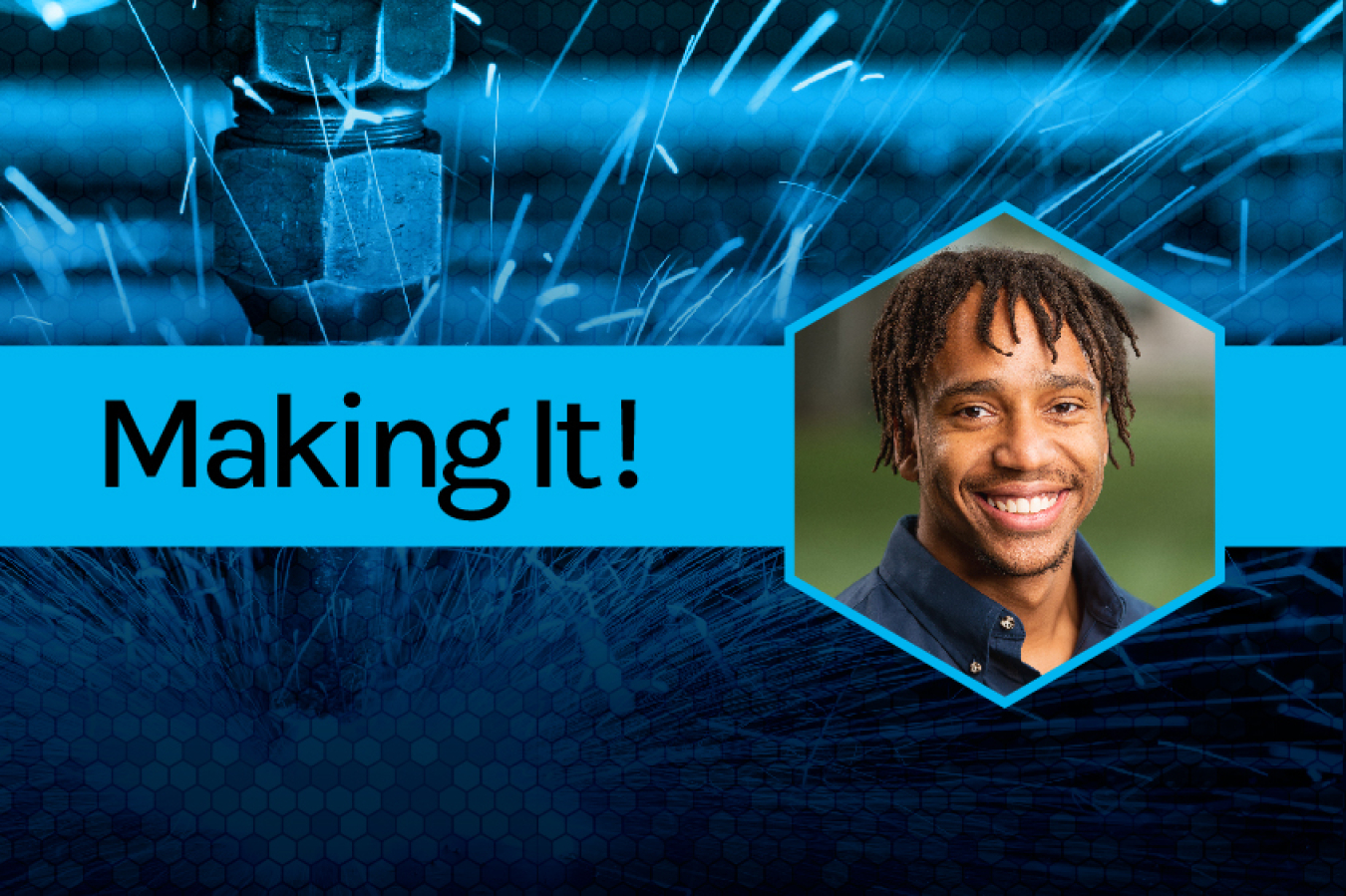
“What do you do when you create the science, but it’s not up to you how it’s used?”
For Jon-Edward Stokes, a molecular engineering Ph.D. student at the University of Chicago, this question is like a beacon—or a mushroom cloud. “Oppenheimer is one of the prime examples,” Stokes continued. “He created the science, but at what cost?” J. Robert Oppenheimer might be known as the “father of the atomic bomb,” but he didn’t decide how or when to drop it.
That’s one reason why Stokes, who recently completed a GEM Fellowship with the U.S. Department of Energy’s Advanced Materials and Manufacturing Technologies Office (AMMTO), isn’t keen on a lab-bound life. Instead, he admires scientists like Albert Einstein who tackled both the mathematical and political equation.
Making It!
AMMTO’s Making It! series spotlights the fresh perspectives of our fantastic fellows, who are making next-generation materials and manufacturing processes possible for our clean energy future.
Einstein didn’t just come up with the theory of relativity; he also promoted global human rights and visited the first of the United States’ degree-granting historically Black colleges and universities in 1946 to give a speech denouncing racial segregation.
At AMMTO, Stokes helped researchers develop better ways to manufacture batteries using different chemical compositions. But, like his icon, Einstein, his mind often turns to global human rights issues, too.
Sure, America needs a whole lot more batteries to power the clean energy transition. But, Stokes argued, “in the long run, we will end up creating a larger problem if we keep going the way we’ve been going.”
Some batteries leak toxic chemicals, he explained. And in some cases, mining companies exploit workers (and our planet) to source materials for the lithium-ion batteries that power everything from electric vehicles to smart phones and laptops.
“We have to work to prevent that,” Stokes said.
In this Q&A interview, Stokes shares why he shifted his academic focus from English to science (but still turns to poetry for inspiration), how service work with soup kitchens and underrepresented communities gives his career purpose, and which high-level government role he aspires to achieve. This interview has been edited for clarity and length.
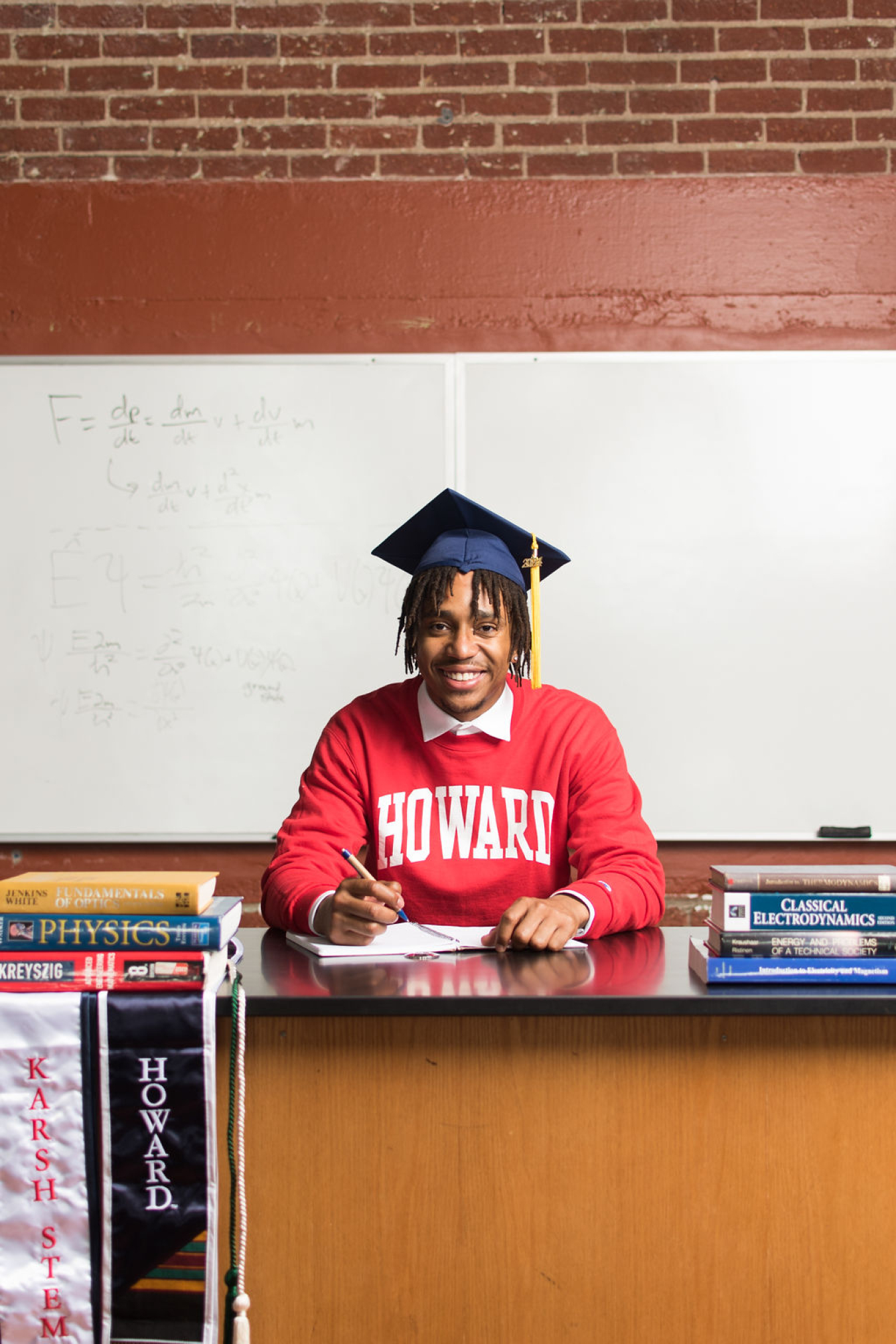
Jon-Edward Stokes can literally look up to one of his idols, Albert Einstein, thanks to a poster hung above his desk. But the young engineer is an idol in his own right: He’s already been working to show a younger generation how they, too, can build a career in science. Photo from Jon-Edward Stokes
Why do you think you’re so driven to solve big, social problems?
My mom was in social work. And my dad worked as the vice president of fundraising affairs and similar positions at various historically Black colleges and universities. So, from a young age, I had the mindset that I wanted to help people out. That’s just how I was raised.
But you didn’t go into social work, like your mom. What drew you to science?
When I was in elementary school, a woman who worked in our cafeteria ran a recycling and composting program. My family would go every Saturday morning to recycle. And that's when I learned about things like climate change, the waste that people produce, and—well, now I know the term for it—circularity, using sustainable methods to preserve the Earth.
And then I got really interested in Albert Einstein and astrophysics and cosmology.
Why Einstein?
I learned about guys like Einstein and Stephen Hawking, who were working on stuff like black holes and cosmology. I didn't learn until later how much [Einstein] was doing in terms of social justice and science. He went to Lincoln University to help increase the representation of different races in science, technology, engineering, and mathematics (STEM)—specifically Black people. It makes sense because he was a Jewish scientist in Germany during World War II. He’s still a pretty big inspiration to me.
Was it Einstein who inspired you to major in physics in college?
I wasn’t sure what I was going to major in in college. But once I hit senior year of high school, I did a summer internship at the Fermi National Accelerator Lab, which is about an hour and a half out from where I live, and got into particle physics. That was a huge factor in deciding my major. Physics is still very near and dear to my heart, but I also wanted to be able to do things related to the environment. So, I decided to do renewable energy. And in Chicago, which I consider my home, I got a very good sense of social justice. I’m trying to combine all that into one career path.
I decided to pivot because I was more concerned with the inner workings of the universe.
How can you blend all three of those passions—physics, environmental science, and social justice—in one career?
I decided to go with material science. AMMTO has a very large focus on batteries, and that was where I became intrigued by using materials that are more environmentally friendly and abundant than the traditional lithium, cobalt, and nickel.
Batteries work fine, yes, but we need to learn from the past. In the industrial revolution, they used a lot of coal and oil, and look where we are now. Lead acid batteries and lithium-ion batteries both have toxic materials, and there are human rights issues associated with the mining of materials used to create these batteries, especially lithium-ion battery cathode materials.
Did you always know that you would end up in STEM?
Actually, no. At one point, I thought I was going to major in English, because that was my best subject in high school, and possibly do music on the side. I still play bass and sometimes drums and piano. I’ve been doing a lot of gospel music lately, playing at church. I also play folksy R&B and pop music with groups outside of churches. I decided to pivot because I was more concerned with the inner workings of the universe.
I still write, and I love gathering meaning from things I read, including poetry books, like The Oxford Anthology of African American Poetry, Tupac’s poetry book, The Rose That Grew from Concrete, and One Show Marching Towards Heaven. And I really like Amiri Baraka, Gwendolyn Brooks, and Langston Hughes—poets from that era. Sometimes I just want inspiration.
So, in school, you’re studying the inner workings of the universe. But with poetry, you’re kind of studying the inner workings of humans.
Yeah—the best of both worlds. Right now though, I’m reading Stephon Alexander’s book, The Jazz of Physics. He talks a lot about how music is related to things like math and science.
What led you to AMMTO?
As a GEM fellow, you apply to graduate school, but you also look for companies or, in this case, government agencies to sponsor you. I applied to the U.S. Department of Energy because I saw they have an Office of Energy Efficiency and Renewable Energy, and renewable energy is the main thing I wanted to do. The GEM program put me in AMMTO because I mentioned that I wanted to do material science, and I had experience working with batteries. I also indicated that I wanted to do some policy work.
What interested you about policy?
I'll be able to do all this research, but if I also look at policy, I may be able to influence how the science is used. Politicians don’t always have the requisite knowledge to make decisions that can actually benefit the people. More people should go the political science or policy route if they’re concerned about how science is being used.
What have you gotten out of the GEM Fellowship so far?
I’ve learned a lot about how the government chooses who to fund and why, like how it often comes down to the effectiveness of a company’s business idea or model and how well they fit the funding agency’s portfolio. I’ve been able to ask people about different technologies, problems, and solutions. Like, “What happens when we start running out of lithium?” Or, “How do we improve the circularity of batteries in general?” It has given me a really good perspective on what it takes to successfully design and manufacture batteries.
There are a lot of kids who don’t know they have the option to be a scientist. They don’t know what that looks like. And I feel like it’s my job to show them.
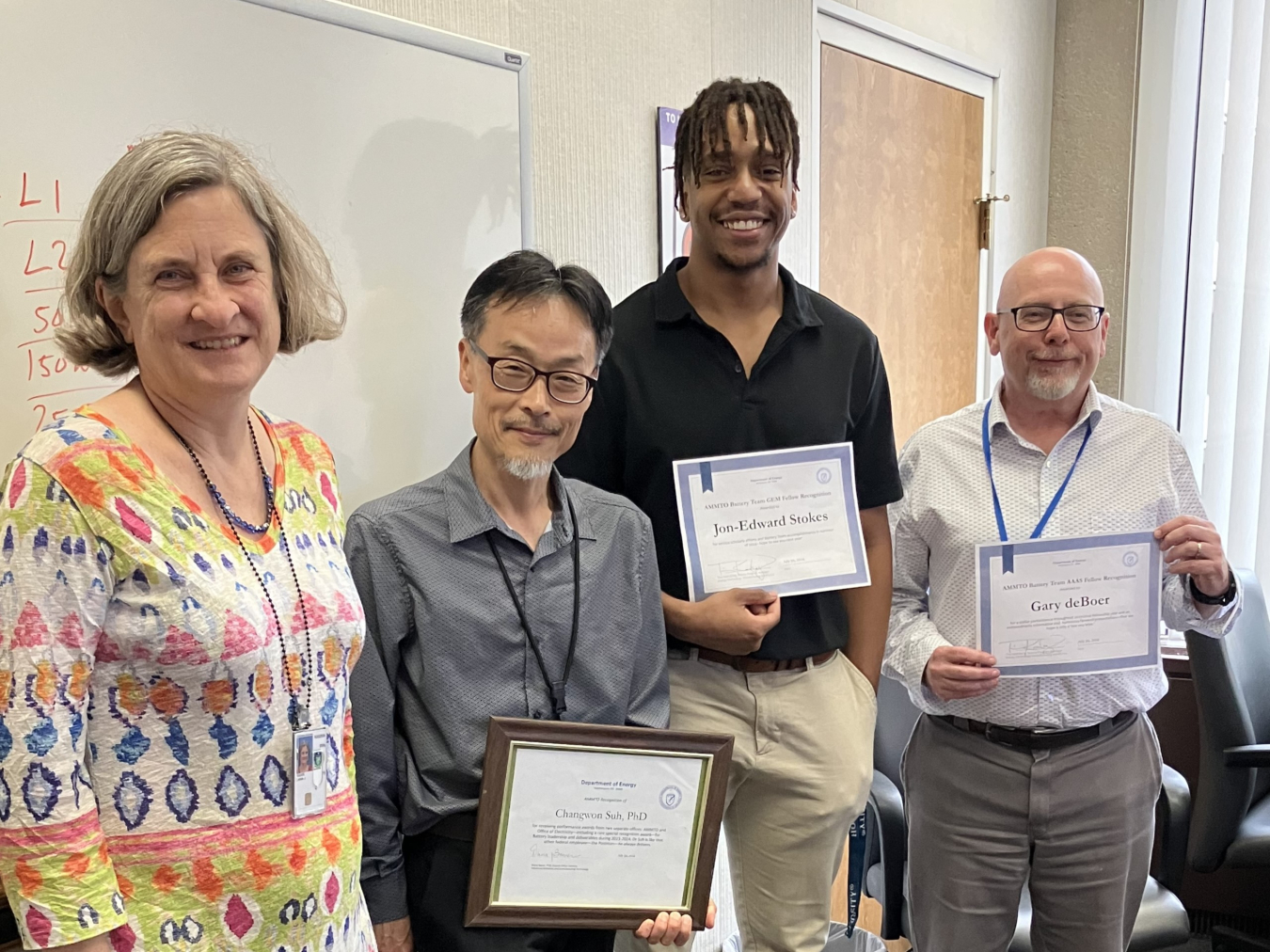
At AMMTO, Stokes was put on the battery team, which makes sense: During his last two years of college, he interned at MIT where he worked on 3D solid-state lithium-ion batteries and, later at Howard, he studied the chemistry and physics behind lithium salt batteries. From L-R AMMTO Deputy Director Diana Bauer, Technology Manager Changwon Suh, and former AAAS Fellow Gary DeBoer. Photo from Jon-Edward Stokes
In an ideal world, what would you most hope to accomplish?
I would hope to establish myself as a leading expert and voice in the field of lithium-ion battery alternatives and in grid energy production and storage. And I would want this to be a worldwide effort and travel to places like Costa Rica, which already has a good renewable energy focus. I hope to be able to eventually go into policy. But hopefully, I can just make whatever impact I can—like developing a better recycling program for the United States—and still make music on the side, like Stephon Alexander.
You’ve also done a lot of community service work, right?
In Washington, D.C., and especially here in Chicago, I’ve done service days at food pantries. It reinforced that what I do should be for the community. There’s a certain peace of mind in knowing that what you’re doing is going to help somebody. It’s grounding yourself in purpose.
At Howard University, my undergraduate institution, I also took a service trip to Richmond, Virginia, which was a good reminder that there’s still so much talent out there that needs to be scouted. I talked to kids about what I want to do and saw some of their faces—it was like they had never heard about a Ph.D. or getting paid to go to school before. There are a lot of kids who don’t know they have the option to be a scientist. They don’t know what that looks like. And I feel like it’s my job to show them.
What advice do you have for those kids who might want to pursue a career in STEM?
You don’t have to have it all figured out, but figure out which type of science interests you most. Be open minded and try out different things. I hate to be that guy, but study hard, do well in school, and always be curious.
All the greatest minds had their hands in different disciplines. Think about Pythagoras. Yeah, he was a mathematician, but he was also a huge music guy. Albert Einstein was one of the most influential physicists of all time, but he was also a musician. So, be open to gathering inspiration from more than one source. That's one of the key things that separates your run-of-the-mill scientists from a Stephen Hawking.
Read About More Fellows
-
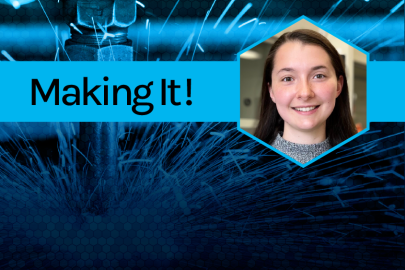 For as long as she can remember, Emilie Lozier has found comfort in science. Now, she applies that same scientific curiosity to tackling energy technology and workforce challenges for a cleaner, greener future.
For as long as she can remember, Emilie Lozier has found comfort in science. Now, she applies that same scientific curiosity to tackling energy technology and workforce challenges for a cleaner, greener future. -
 DOE‘s Established Program to Stimulate Competitive Research Program is accepting applications for Implementation Grants. AMMTO is especially interested in funding research in pursuit of the circular economy, smart manufacturing and energy-efficient microelectronics.
DOE‘s Established Program to Stimulate Competitive Research Program is accepting applications for Implementation Grants. AMMTO is especially interested in funding research in pursuit of the circular economy, smart manufacturing and energy-efficient microelectronics. -
 Happy belated Nanotechnology Day! Nanotechnology is the manipulation and manufacturing of materials and devices on the scale of atoms or small groups of atoms.
Happy belated Nanotechnology Day! Nanotechnology is the manipulation and manufacturing of materials and devices on the scale of atoms or small groups of atoms. -
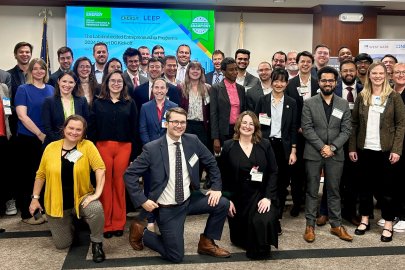 DOE’s Lab-Embedded Entrepreneurship Program (LEEP), managed by AMMTO, welcomed its 2024 cohort to its headquarters in Washington, D.C. to kick off their two-year fellowships
DOE’s Lab-Embedded Entrepreneurship Program (LEEP), managed by AMMTO, welcomed its 2024 cohort to its headquarters in Washington, D.C. to kick off their two-year fellowships -
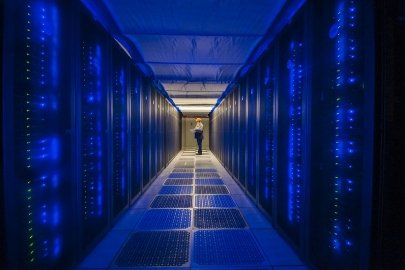 Look out for a funding opportunity from the AMMTO-sponsored High-Performance Computing for Manufacturing program. Coming later this fall!
Look out for a funding opportunity from the AMMTO-sponsored High-Performance Computing for Manufacturing program. Coming later this fall! -
 Jon-Edward Stokes is Making It! In a Q&A interview, how his shifted his academic focus from English to science and what gives his career purpose.
Jon-Edward Stokes is Making It! In a Q&A interview, how his shifted his academic focus from English to science and what gives his career purpose. -
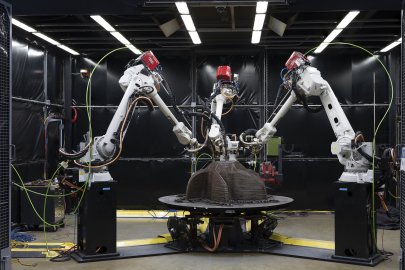 Check out the winning projects funded by AMMTO. Congratulations to the winners!
Check out the winning projects funded by AMMTO. Congratulations to the winners! -
 DOE announced funding for three additional projects focusing on various materials and manufacturing technologies for offshore wind.
DOE announced funding for three additional projects focusing on various materials and manufacturing technologies for offshore wind. -
 Gary DeBoer is Making It! This former AAAS fellow urges us to make decisions that will better the lives of future generations.
Gary DeBoer is Making It! This former AAAS fellow urges us to make decisions that will better the lives of future generations. -
A $33 million funding opportunity aims to accelerate the advancement of smart manufacturing technologies and processes necessary to develop and deploy the innovative technologies and materials needed for the nation’s clean energy transition.
Get the latest Making It! profile and other advanced materials and manufacturing news in your inbox.

